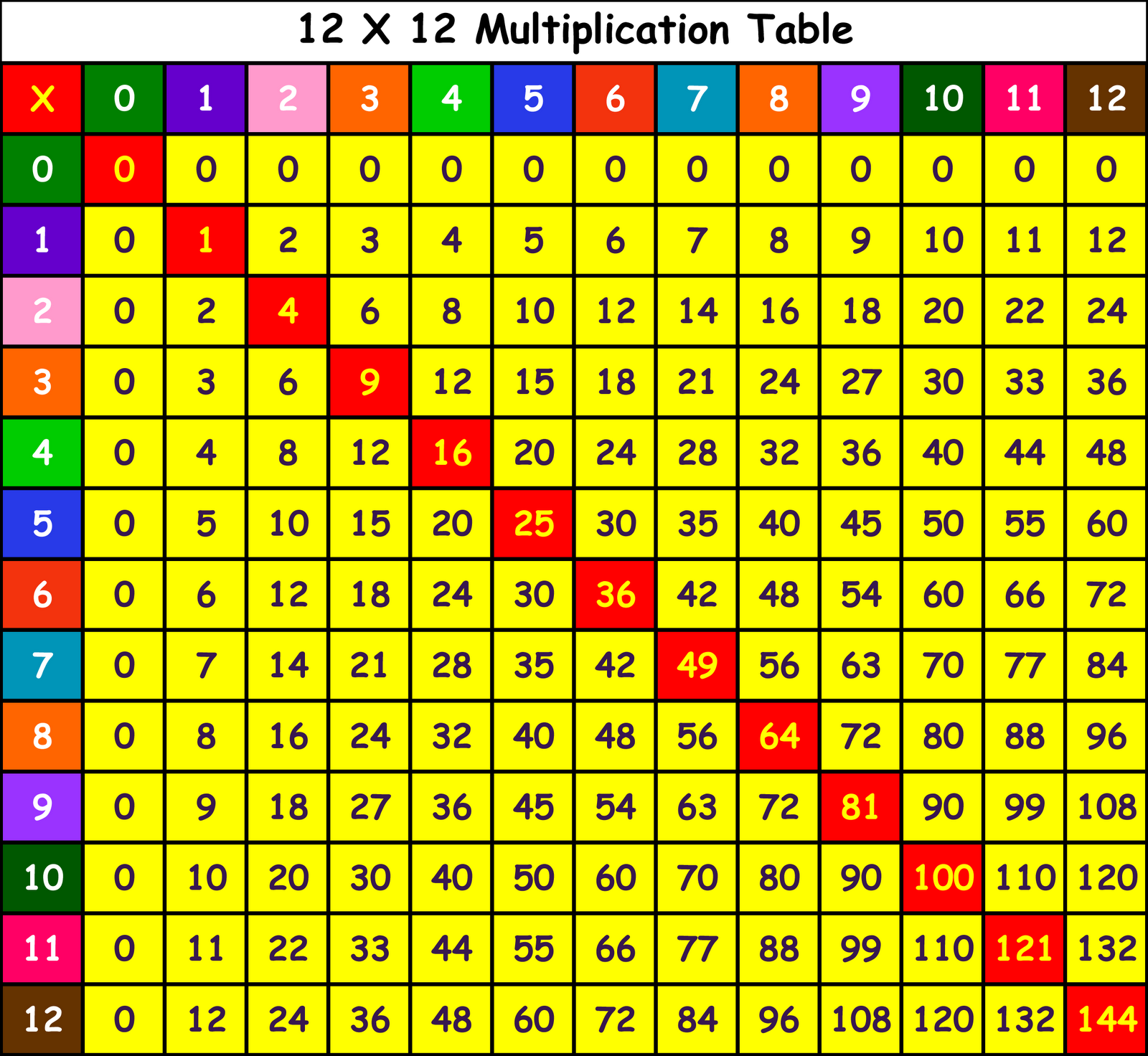
20 is the product of 4 and 5 and 5 and 4, etc. For example, 25 is the product of 5 and 5. The value in the green diagonal is the product of the column and row values that align with it in grey. Use the green diagonal to understand how the multiplication chart is read. The green diagonal on the chart represents the squares of the numbers, namely 1 × 1 = 1, 2 × 2 = 4, 3 × 3 = 9, etc. Rows are read horizontally from left to right while columns are read vertically from top to bottom.

To use a multiplication chart, first look at the rows and columns in grey in the figure above. Being familiar with all the multiplication facts enables a person to focus on more complex mathematical concepts that involve multiplication, without having to worry about the actual multiplication. It can be helpful for learning and memorizing multiplication facts, which is essential, since multiplication is used throughout all areas of mathematics in some form or another. Home / primary math / multiplication / multiplication chart Multiplication chartĪ multiplication chart, also known as a multiplication table, or a times table, is a table that can be used as a reference for the 100 multiplication facts.


 0 kommentar(er)
0 kommentar(er)
